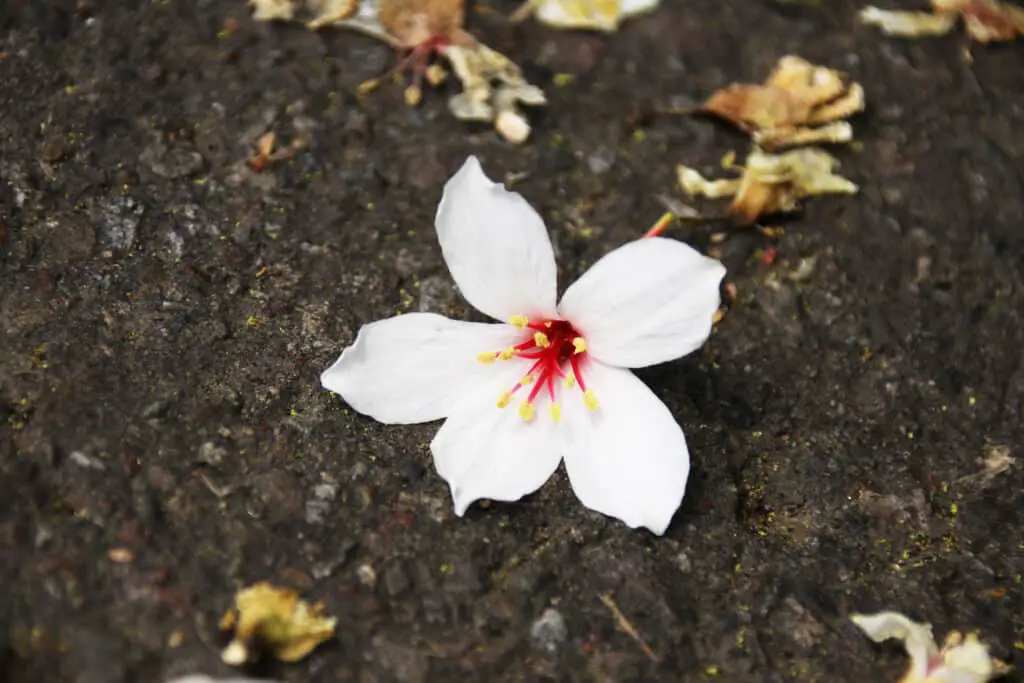Renovating and redoing houses has become a hobby for many people. When redesigning, it is important to understand the products you are using. Can tung oil be used on a butcher block?
Pure tung oil is safe to use on all wood surfaces that come in contact with food. Butcher blocks, island counters, and any kitchen countertop can be redone with pure tung oil for a beautiful matte finish. It is easy to apply and nontoxic which makes it a great choice when looking for a wood finish.
What is tung oil and why is it so popular to use on wood-finished products? Continue reading to learn more about tung oil and its orgins!
What is Tung Oil?

Tung oil is the product of pressed nuts from a native tung tree. Tung trees, natively found in China, are named after their heart-shaped leaves. Tung in Chinese translates to “heart” in English. This “heart tree” came into use during the 14th century, as Chinese merchants used the pressed nut oil to cover and protect their wooden ships. The tung oil covered their boats with a waterproof protective layer to prevent eroding or mold. Tung oil is also referred to as “China wood oil”. In Confucius’ writings, there are mentions of tung oil around 400 B.C. which shows how far back it has been produced and used.
When tung oil is pressed pure, it is a drying oil. When applied to wood, it leaves a slight gold tint to the finish. One characteristic that makes tung oil so popular is how it penetrates the wood. When applied, it wets the surface of the wood, allowing it to fill even the smallest of cracks or breaks in the wood. Tung oil is a vegetable oil that will not darken the tint of the wood over time.
Tung tree seeds were first brought from China to the United States of America in 1905, by an agricultural explorer. This senior explorer was in the U.S. Department of Agriculture. The Bureau of Plant Industry in 1912 offered free one-year-old tung trees to promote the growth and harvesting of tung trees in the United States of America. This was convenient timing after many acres of pine trees had been cleared and Gulf Coast farmers were looking for their next crop. By 1927, there were over 400 farmers growing tung trees, covering over 10,000 acres of land.
Right before the United States of America joined the fight of WWII, tung oil was classified as a strategic item used as a defense. During this time government helped farmers and other growers of this tree to produce as much tung oil as possible to help the war effort. During WWII, all ships and ammunition were coated or painted in tung oil to protect them for their use in war.
Tung Tree
Also known as Vernicia Fordii, tung trees are small trees that can reach a height of 40 feet. The bark on a tung tree is smooth and allows dark green leaves to sprout. The leaves have a glossy appearance and a blade-line shape to them, giving them their “heart” name. The beautiful flowers growing on the tree range from 1 to 3 inches in diameter and have a delicate appearance of white petals tinged with yellow and red. The fruit the tree bears is the nut containing the seeds that are pressed to produce the oil. Each nut has 3-7 seeds of large size.
While the oil produced from pressing the seed is extremely useful and desired, it is extremely toxic if ingested. Consuming only one seed could be fatal to a human. Not only are the seeds toxic, but the entire plant is poisonous. So despite the useful characteristics of the tree and the natural beauty it holds, this is probably not the best tree to be planted in the backyard, especially with children around.
These extremely useful and poisonous trees thrive in well-drained yet moist soil that is slightly acidic. Tung trees are rapid growers, producing fruit after only 3 years and begin to produce large amounts of fruit around their fourth or fifth year. Commonly, these trees continue to produce fruit in commercial quantities for over 30 years, making them a great investment for those wanting to produce and sell tung oil.
How Is the Oil Produced from the Tree?
Depending on where in the world the tree is planted, it will drop the fruit after the prime growing season. In the Northern Hemisphere, this is from late September until the end of November. Commonly, this will happen after the summer heat has left, but likely will end around the first snowfall.
After the fruit has fallen, the fruit has to be left alone and untouched for a couple of weeks. This is to allow the fruit time to cure and dry. The oil then can be released and produced by harvesting the nuts. The nuts are surrounding by a hard outer shell to protect the nut and the seeds. After the nut has been removed from the outer shell, the seeds inside can be pressed to release the oil. Nuts that have been properly dried and pressed are only 20 percent oil. During good seasons, an acre of tung trees will bring about 100 gallons of raw tung oil each year.

How To Finish Wood with Tung Oil
Choosing to finish your countertops or kitchen island with tung oil is a great way to bring some warmth into your home. With its slight golden appearance and clean finish, tung oil is a great choice of finish to complete your kitchen renovation. Tung oil, as previously mentioned, does not darken the color of the wood over time, which makes it a great choice to ensure your kitchen and finished wood have the same gorgeous finish.
A great thing about choosing to have wood countertops or a kitchen island compared to granite, concrete, stone, tile, or stainless steel is the great ability wood has to fit almost any decoration style you choose. This is great for those of you who are constantly changing your style and wanting to redesign your home constantly. Having a staple piece such as a wood-surfaced kitchen island will be able to bring your home together, regardless of the style you choose.
Butcher block countertops are becoming increasingly more popular, due to their natural but stunning appearance which truly brings warmth into a kitchen. Making a house a home. When wanting to install butch block countertops, choosing tung oil as your finish for your countertops is a great idea because of all the amazing qualities tung oil can offer as a finish. Many have already been mentioned, but some benefits of using tung oil as a finish include the oil being naturally produced, the ability to fully penetrate and cover wood, giving wood a protective waterproof surface, and its food-safe quality (once cured). Not to mention applying tung oil to a wood surface is extremely easy (a great option for beginners!).
Now that you know more about why you should use tung oil on your wood countertops and butcher block countertops, let’s get into how you can go about applying this oil finish to your preexisting butcher block countertop.

Sanding
You will want to begin by sanding down your wood. This is to ensure there is no leftover residue from a previous finish and to even out the surface texture. If you have a sanding machine, ensure that you are not sanding too rough or too much off of the surface. If you do not have a sanding machine, there is also the option to sand it by hand with sandpaper, but I recommend either borrowing a sanding machine from a friend or neighbor.
If this is not an option and you are trying to remove a previous finish on your wood countertops, you can look into liquid sandpaper. It is important to read all of the instructions on your liquid sandpaper bottle, as it is a chemical solution created to remove the gloss or paint layer on the wood. You do not want to leave it on too long or it will start to destroy your countertops.
Mix Your Products
Now that you have prepared the area you will be finishing, it is time to prepare the finish. Choose the type of tung oil you prefer for your finish. It is also important to remember you will have to purchase the same amount of solvent as the tung oil. This will have to be mixed before you can apply the mixture to wood. Mixing the solvent is thinning the oil. To properly cure, tung oil needs to be in contact with oxygen to solidify and lose the sticky, oily feeling it will have in the beginning. If you fail to mix in the solvent, it will take much longer for the oil to solidify.
Apply The Tung Oil
Before applying the oil, ensure the wood is completely clean and there is no residue or sawdust left on the surface. Completely wipe down the area. With a clean washcloth, rag, or another piece of fabric, completely soak it in the oil and begin to apply the finish to the wood. Do so in circular motions to ensure an even spread of the tung oil to the wood surface. Cover the entire surface of the wood where you want the tung oil finish to be applied. Do not leave any excess residue on the wood.
Curing
Allow the oil to sit and soak in for 15 minutes. After this time, use a clean rag to wipe off all the excess oil that was not absorbed into the wood. Leaving the oil on the wood will greatly increase the amount of curing time. Depending on your wood type, excess wood may be released and pushed to the surface after 24 hours. If this is the case, simply wipe off the excess for a second time after 24 hours. Allow the oil to dry for 24+ hours.
Sanding
After waiting for the oil to completely dry, touch the wood to ensure it is dry. For the best finish, lightly sand the area (do not use liquid sandpaper) to remove any bubbles or excess oil areas. Repeat previous steps until you have 3 layers of tung oil. This will produce the best and most protective layer for your wood countertops.
Downsides to Using Tung Oil as a Wood Finish
Despite all of the amazing benefits tung oil can offer, there are a few downfalls to using it as a wood finish. It is important to all the facts and opinions before choosing to do something to your home, so it is important you understand these few downsides.
Maintenance
Because this is an oil you are applying as a finish, it will have to be oiled regularly to stay in good shape. For a regularly used kitchen island or countertop, this will be around every 4 months. Luckily, while you will have to keep up this regular maintenance, it is simple and does not take that much time. Also, reapplying the oil to your counter regularly allows your counter spaces to be constantly refinished and refreshed to bring out the original beauty of the work.
Time To Be Fully Cured
After you apply the oil to your counter spaces, it will take time before you can use the countertops as a work surface. Some people have the belief that when applying oil to your counter, it will remain oily forever. Luckily this is not the case, but there is some truth to this misconception. After finishing your countertops with tung oil, it will take about a week for the surface to fully cure and for you to be able to use the counter.
Because tung oil is a “drying oil” it will become solid after a short amount of time being exposed to oxygen. The good thing, as previously mentioned is once the oil has been cured, it is no longer oily and will not leave any oil residue on any papers or anything you place on the counter.


